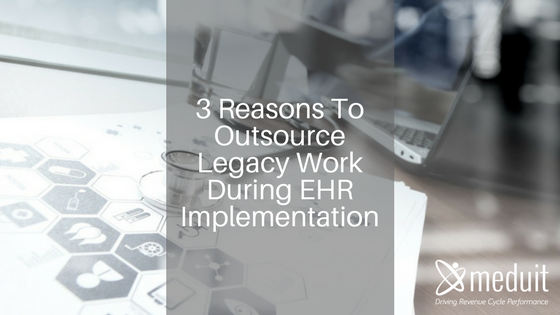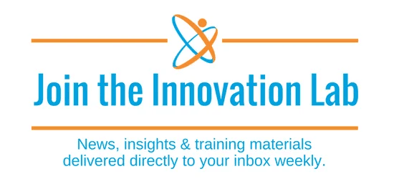
Implementation of a new Electronic Health Records system (EHR) is an expensive endeavor. Up-front costs can be enormous, but there are also many hidden costs that can be extremely problematic for hospitals and physician groups during the conversion process. Outsourcing legacy support can take some of the strain off your revenue cycle and your staff.
The Unexpected Costs of Implementation
You’ve considered the sticker price of the new system, the cost of training your staff, and possibly even accounted for some of the overtime that comes with implementation. However, there are commonly unanticipated costs that you may not have accounted for: IT support, lost productivity despite the extra hours being logged and reduced cash flow and productivity throughout the lengthy implementation process.
Because of the wide variety of EHR systems available, and the myriad ways they can be implemented depending on organizational needs, the cost of purchasing and implementing a new system varies widely. Health systems have reported costs as high as $1.5 billion on implementation and infrastructure to establish a new system. Additionally, implementation typically lasts more than a year. Sometimes it can take as many as four or five years to get back to pre-conversion production levels. During this time there is a significant learning curve for users that will naturally slow them down. All the extra time spent working in the EHR will inevitably mean you see less patients, and that decreased productivity can last for years.
This revenue decline poses significant financial problems for many practices even before considering what is potentially the largest unexpected cost of conversion: the A/R loss from your legacy system.
Legacy A/R: Use it or Lose It
To maintain the integrity of the new system, most major patient account systems no longer offer the ability to convert accounts. In the past, moving to a new system was a true conversion where all existing accounts were dumped into the new system, but trying to make old files fit into new processes proved to be problematic and many of the major players have decided to no longer make that an option. This includes Epic – which accounts for EHR use in more than one quarter of the country’s hospitals – and Cerner – which has scooped up the largest market share with licenses in more than 25,000 facilities in 35 countries.
As a result, legacy systems are packed with A/R that needs to be worked and organizations are faced with significantly reduced cash flow during a time of extremely high costs. This may not create such a stagnation in the revenue cycle if it did not require all of a team’s focus to train and prepare for implementation. Too often healthcare organizations attempt to use their internal staff to support the legacy system while also training and implementing the new one, but there are only so many hours in a day and this often leads to decreased productivity on all fronts.
The Greatest Cost of All
Although implementation of a new system can reduce revenue and increase costs, there is an even more impactful cost to many organizations: staff burnout and resignation.
Implementation teams can spend hundreds of hours preparing for and implementing a new EHR system. Consider that this extreme time commitment is in addition to the normal workload of seeing and treating patients. This doesn’t leave much time for legacy A/R follow ups.
With so much on their plate often there also comes a point where staff members feel so overwhelmed or burnt out that they resign. In some instances, key staff members will not even let it get to that point. Many employees who are nearing the end of their careers, or who have already gone through a conversion, will simply refuse to do the work and leave before implementation even begins. In either case you risk losing employees with significant institutional knowledge, which is a much greater loss then a few legacy accounts.
The Solution: Legacy Support
An EHR conversion can lead to higher costs, lower revenue, and staff turnover, but there is something you can do to alleviate these obstacles.
Legacy work down solutions have become instrumental to the conversion process. In fact, nearly 80% of organizations that have gone through this process have looked to partner with someone to help them manage their accounts, maintain a steady cash flow, and alleviate some of the burden from their staff while they convert.
In these programs the hospital is assigned a dedicated team from management through representatives to work their legacy accounts, freeing their staff to focus on the current active inventory and to assist in preparing for conversion. These solutions allow for the programmatic placement of aged inventory in stages (150+ days, 120 days, 90 days, etc.) until all aging buckets within the legacy A/R are placed and being worked by the vendor partner. This approach allows the organization to maintain a steady and predictable monthly cash flow, and a reduction in existing A/R.
As more health systems come together and implement system-wide EHRs, it is more important than ever to source new partners to make the transition as simple as possible. A legacy work down partner provides steady cash flow while the hospital team focuses on taking their organization the next step into the future.
Is your healthcare organization planning a system conversion? Contact us today to learn more about our legacy work down program and don’t let your receivables take a step back as you try to move forward. Learn more about Legacy A/R Work Down solutions or contact us today!
Take this article with you! Click here for a printable version.
Written by Ali Bechtel, Marketing Manager
This information is not intended to be legal advice and may not be used as legal advice. Legal advice must be tailored to the specific circumstances of each case. Every effort has been made to assure this information is up-to-date as of the date of publication. It is not intended to be a full and exhaustive explanation of the law in any area, nor should it be used to replace the advice of your own legal counsel.



